Library / Research / Biodiversity, Taxonomy, Ecology
Explore PDFs and information about current and past research topics. Study all of the research data from the region.
<< RETURN TO LIBRARY INDEX
| Name | Size | Hits |
|---|---|---|
 Rewilding Coral Reefs Rewilding Coral Reefs |
1740513193 Author(s): Mark Erdmann Tags: conservation, ReShark, rewilding, StAR, leopard shark, Shark, zebra shark, Conservation International, DAN, Conservation Biology, Alert Diver Description: REWILDING IS A POPULAR TERM IN CONSERVATION CIRCLES, but what does it mean, and is it appropriate for coral reefs? Should divers be clamoring for reef rewilding? Does it represent a significant advancement in coral reef conservation? Though I believe rewilding coral reefs is a valuable approach, it requires a strong, established foundation of good old-fashioned marine conservation. I view reef rewilding as a tertiary marine conservation strategy that we should attempt only after the fundamentals of an effective marine conservation strategy (often anchored with a well-managed marine protected area) are in place. The ReShark initiative in Raja Ampat, Indonesia, is a good case study for reef rewilding. ReShark’s StAR project is the world’s first program designed to recover an endangered shark population by releasing into the wild leopard shark pups hatched from eggs purpose-bred in large public aquariums around the world. 1.5 MiB |
158 |
 Indonesia Sustainable Development News Digest, 2024 Issue #21 Indonesia Sustainable Development News Digest, 2024 Issue #21 |
1731088942 Author(s): Starling Resources various authors Tags: Biodiversity, climate change, Marine and Fisheries, Forests and Land Use, Investment and Finance, Conservation and Protected Areas, Technology, Human Rights, Indigenous People and Gender Equality, Energy and Mining Pollution and Waste Description: 2024 Issue 21 — 17 October The Indonesia Sustainable Development News Digest is a biweekly collection of summaries of articles related to conservation, the environment, and sustainability in Indonesia that have appeared in print or online in local, regional, and global English-language media. We welcome comments, suggestions, and corrections. To learn more about us and to access previous editions of the News Digest, please visit our website at www.starlingresources.com. If you would like to add colleagues or friends to our distribution list or unsubscribe, please contact us at newsdigest@starlingresources.com. 0.2 MiB |
625 |
 Fifteen Years Of Lessons From The Seascape Approach: A Framework For Improving Ocean Management At Scale Fifteen Years Of Lessons From The Seascape Approach: A Framework For Improving Ocean Management At Scale |
1623274618 Author(s): Shannon E. Murphy, Ginny Farmer, Laure Katz, Mark V. Erdmann and more Tags: Description: Seascapes are large, multiple-use marine areas, defined scientifically and strategically, in which government authorities, private organizations, and other stakeholders cooperate to conserve the diversity and abundance of marine life and promote human well-being. This approach has been applied by global nonprofit partnerships in five seascapes across eight countries and has drawn on the practical experience of more than 250 partners over 15 years. These experiences have helped define the Seascape approach, consisting of nine essential elements, for achieving effective ocean governance and management from local to regional levels. Lessons learned relate to using integrated planning frameworks, community-led and locally owned initiatives, and a network of partners and a “backbone” organization for effective Seascape planning and design; promoting diversification in funding sources, private sector engagement, and the transition of nonprofit roles to ensure durability of a Seascape; and ensuring Seascape outcomes are measured through robust monitoring and evaluation frameworks and communicated effectively. Seascapes are unique in their ability to create a pathway toward sustainable development. To ensure support and amplification of the approach, they must align with diversified funding opportunities and global priorities outlined in international United Nations conventions focused on sustainable development and ocean health. 4.7 MiB |
92235 |
 Walking, swimming or hitching a ride? Phylogenetics and biogeography of the walking shark genus Hemiscyllium, Hemiscyllium Phylogeny Walking, swimming or hitching a ride? Phylogenetics and biogeography of the walking shark genus Hemiscyllium, Hemiscyllium Phylogeny |
1596665785 Author(s): Christine L. Dudgeon, Shannon Corrigan, Lei Yang, Gerry R. Allen, Mark V. Erdmann, Fahmi, Hagi Y. Sugeha, William T. White and Gavin J. P. Naylor Tags: Description: It can be challenging to identify the forces that drive speciation in marine environments for organisms that are capable of widespread dispersal because their contemporary distributions often belie the historical processes that were responsible for their initial diversification. In this contribution we explore the likely sequence of events responsible for the radiation of walking sharks in the genus Hemiscyllium using a dated molecular phylogeny. The nine currently recognised species in the genus consist of small, benthic sharks that are restricted to the Indo-Australian Archipelago and show limited dispersal at both juvenile and adult stages. 0.7 MiB |
846 |
 The evolution of conspicuous facultative mimicry in octopuses: an example of secondary adaptation? The evolution of conspicuous facultative mimicry in octopuses: an example of secondary adaptation? |
1595444415 Author(s): CHRISTINE L. HUFFARD, NORAH SAARMAN, HEALY HAMILTON and W. BRIAN SIMISON Tags: Description: The ‘Mimic Octopus’ Thaumoctopus mimicus Norman & Hochberg, 2005 exhibits a conspicuous primary defence mechanism (high-contrast colour pattern during ‘flatfish swimming’) that may involve facultative imperfect mimicry of conspicuous and/or inconspicuous models, both toxic and non-toxic (Soleidae and Bothidae). Here, we examine relationships between behavioural and morphological elements of conspicuous flatfish swimming in extant octopodids (Cephalopoda: Octopodidae), and reconstructed ancestral states, to examine potential influences on the evolution of this rare defence mechanism. We address the order of trait distribution to explore whether conspicuous flatfish swimming may be an exaptation that usurps a previously evolved form of locomotion for a new purpose. Contrary to our predictions, based on the relationships we examined, flatfish swimming appears to have evolved concurrently with extremely long arms, in a clade of sand-dwelling species. The conspicuous body colour pattern displayed by swimming T. mimicus may represent a secondary adaptation potentially allowing for mimicry of a toxic sole, improved disruptive coloration, and/or aposematic coloration. © 2010 The Linnean Society of London, Biological Journal of the Linnean Society, 2010, 101, 68–77 1.5 MiB |
1492 |
 Walking, swimming or hitching a ride? Phylogenetics and biogeography of the walking shark genus Hemiscyllium Walking, swimming or hitching a ride? Phylogenetics and biogeography of the walking shark genus Hemiscyllium |
1579844447 Author(s): Bird's Head Seascape Tags: epaulette shark, eastern Indonesia, Australia, New Guinea, radiation, Sahul region. Description: It can be challenging to identify the forces that drive speciation in marine environments for organisms that are capable of widespread dispersal because their contemporary distributions often belie the historical processes that were responsible for their initial diversification. In this contribution we explore the likely sequence of events responsible for the radiation of walking sharks in the genus Hemiscyllium using a dated molecular phylogeny. The nine currently recognised species in the genus consist of small, benthic sharks that are restricted to the Indo-Australian Archipelago and show limited dispersal at both juvenile and adult stages. We discuss how major tectonic changes, sea level fluctuations and the unique biology of the species may have influenced speciation in the group, as well as the current distribution of the genus and each of its constituent species. Phylogeographic analysis of the genus combined with biogeographic reconstruction of the region shows a recent radiation during the Miocene and Pliocene, and supports a combination of vicariance and founder modes of speciation mediated by major tectonic, geological and oceanographic historical processes. 0.7 MiB |
677 |
 (Supplementary material) Walking, swimming or hitching a ride? Phylogenetics and biogeography of the walking shark genus Hemiscyllium (Supplementary material) Walking, swimming or hitching a ride? Phylogenetics and biogeography of the walking shark genus Hemiscyllium |
1579844354 Author(s): Bird's Head Seascape Tags: Description: Supplementary material Walking, swimming or hitching a ride? Phylogenetics and biogeography of the walking shark genus Hemiscyllium 0.2 MiB |
854 |
 Sueviota Minersorum, a new species of sponge-dwelling goby (Teleostei: Gobiidae) from Misool, Raja Ampat Islands, Indonesia Sueviota Minersorum, a new species of sponge-dwelling goby (Teleostei: Gobiidae) from Misool, Raja Ampat Islands, Indonesia |
1572376767 Author(s): David W. Greenfield, Mark V. Erdmann, Ilham Vermandra Utama Tags: taxonomy, coral reef fishes, ichthyology, systematics, Indo-Pacific Ocean, dwarfgoby, sponge, Eviota Description: A new gobiid species, Sueviota minersorum, is described from 4 specimens, 17.9–23.2 mm SL, collected from inside Theonella tube sponges at 20–22 m depth. The new species has a dorsal/anal-fin ray count of 9/8 and 17 or 18 pectoral-fin rays, all unbranched, and 27 or 28 lateral scales. It furthermore has a basal membrane fully joining the two branched fifth pelvic-fin rays, a character shared with 4 congeners: Sueviota bryozophila, S. lachneri, S. larsonae, and S. tubicola. Sueviota minersorum is most similar to S. lachneri, but differs in having a stocky body with a deep caudal peduncle, not tapering from the mid-body, and in color patterns. It differs from S. bryozophila in having all pelvic-fin rays branched (vs. unbranched), having a single AITO pore (vs. paired AITO pores), PITO and NA pores (vs. absent), and in color patterns. It differs from S. larsonae and S. tubicola by the absence of a frenum (vs. present) and in color patterns. 2.6 MiB |
1364 |
 Social preferences and network structure in a population of reef manta rays Social preferences and network structure in a population of reef manta rays |
1572373528 Author(s): Robert J. Y. Perryman & Stephanie K. Venables & Ricardo F. Tapilatu & Andrea D. Marshall & Culum Brown & Daniel W. Franks Tags: Description: Understanding how individual behavior shapes the structure and ecology of populations is key to species conservation and management. Like many elasmobranchs, manta rays are highly mobile and wide-ranging species threatened by anthropogenic impacts. In shallow water environments, these pelagic rays often form groups and perform several apparently socially mediated behaviors. Group structures may result from active choices of individual rays to interact or passive processes. Social behavior is known to affect spatial ecology in other elasmobranchs, but this is the first study providing quantitative evidence for structured social relationships in manta rays. To construct social networks, we collected data from more than 500 groups of reef manta rays (Mobula alfredi) over 5 years in the Raja Ampat Regency of West Papua. We used generalized affiliation indices to isolate social preferences from non-social associations, the first study on elasmobranchs to use this method. Longer lasting social preferences were detected mostly between female rays. We detected assortment of social relations by phenotype and variation in social strategies, with the overall social network divided into two main communities. Overall network structure was characteristic of a dynamic fission-fusion society, with differentiated relationships linked to strong fidelity to cleaning station sites. Our results suggest that fine-scale conservation measures will be useful in protecting social groups of M. alfredi in their natural habitats and that a more complete understanding of the social nature of manta rays will help predict population responses to anthropogenic pressures, such as increasing disturbance from dive tourism. 2.9 MiB |
1341 |
 Atlas of benthic foraminifera from coral reefs of the Raja Ampat Archipelago Atlas of benthic foraminifera from coral reefs of the Raja Ampat Archipelago |
1568156293 Author(s): Meena Förderer and Martin R. Langer Tags: Description: Raja Ampat (Indonesia) is a remote archipelago west of Papua mainland and situated at the eastern edge of the Coral Tri- angle. The archipelago is considered one of the species-richest and most pristine localities and home to the world’s most diverse coral reefs. For centuries, reefs of Raja Ampat have enjoyed natural protection and remained largely untouched due to their isolated location. The region represents a key area for evaluating richness and biogeographic patterns of tropical shallow-water organisms, yet the foraminiferal fauna of Raja Ampat is virtually unexplored. Benthic foraminifera are an integral part of the reef fauna, prolific carbonate producers and essential for reefal accretion and sub- strate stability. Previous studies on Indo-Pacific benthic reef foraminifera indicate that diversity is highest in the Central Indo-Pacific and broadly correlates with diversity patterns of other tropical marine taxa. This report presents the first illustrated catalog and comprehensive analysis of the structure, composition, and diversity of the spe- cies-rich benthic foraminiferal biotas of the Raja Ampat Archipelago including an assessment of local reef vitality with the Foram- inifera in Reef Assessment and Monitoring (FoRAM) Index. 47.2 MiB |
1178 |
 Förderer and Langer Distributed under Creative Commons CC-BY 4.0 OPEN ACCESS Five new species and one new genus of recent miliolid foraminifera from Raja Ampat (West Papua, Indonesia) Förderer and Langer Distributed under Creative Commons CC-BY 4.0 OPEN ACCESS Five new species and one new genus of recent miliolid foraminifera from Raja Ampat (West Papua, Indonesia) |
1566603033 Author(s): Meena Förderer and Martin R. Langer Tags: Description: Raja Ampat is an archipelago of about 1,500 small islands located northwest off the Bird's Head Peninsula of Indonesia's West Papua province. It is part of the Coral Triangle, a region recognized as the ``epicenter'' of tropical marine biodiversity. In the course of a large-scale survey on shallow benthic foraminifera we have discovered one new genus and five new species of recent miliolid benthic foraminifera from the highly diverse reefal and nearshore environments. 0.4 MiB |
1098 |
 Patterns of species richness and the center of diversity in modern Indo- Pacific larger foraminifera Patterns of species richness and the center of diversity in modern Indo- Pacific larger foraminifera |
1566602303 Author(s): Meena Förderer, Dennis Rödder & Martin R. Langer Tags: Description: Symbiont-bearing Larger Benthic Foraminifera (LBF) are ubiquitous components of shallow tropical and subtropical environments and contribute substantially to carbonaceous reef and shelf sediments. Climate change is dramatically affecting carbonate producing organisms and threatens the diversity and structural integrity of coral reef ecosystems. Recent invertebrate and vertebrate surveys have identified the Coral Triangle as the planet’s richest center of marine life delineating the region as a top priority for conservation. We compiled and analyzed.... 1.9 MiB |
1047 |
 Beale Et Al-2019-Diversity And Distributions Beale Et Al-2019-Diversity And Distributions |
1562360435 Author(s): Calvin S. Beale, Joshua D. Stewart, Edy Setyawan, Abraham B. Sianipar, Mark V. Erdmann Tags: Manta Ray, Oceanic Manta Ray Description: Our aim was to collect sightings data on oceanic manta rays (Mobula birostris) within the Raja Ampat Archipelago to better understand their population dynamics within the region. These data were compared with environmental variables to seek correlates that may explain any variations in observed sightings frequency. Combined, it is hoped this knowledge will be used to aid effective management of this species in the region. 1.4 MiB |
1360 |
 Using wildlife for local livelihood – Experiences from the Bird’s Head Peninsula, West Papua, Indonesia Using wildlife for local livelihood – Experiences from the Bird’s Head Peninsula, West Papua, Indonesia |
1561050495 Author(s): FREDDY PATTISELANNO, JOHN R. M. APITULEY, AGUSTINA Y. S. AROBAYA, JOHAN F. KOIBUR1 Tags: Description: Wildlife products are valuable commodities, and wild meat is considered as premium value because it has a high value per unit weight compared with other forest products Wildlife products are commonly used for consumption purpose, generating household income and cultural reasons. Because cultural values differ among ethnic groups, it is important to understand how wildlife contributes to local livelihoods in different areas of the Bird’s Head Peninsula. 0.4 MiB |
730 |
 Coral Biodiversity Assessment Dampier Strait Coral Biodiversity Assessment Dampier Strait |
1560801150 Author(s): YUANIKE, FREDINAN YULIANDA, DIETRIECH G. BENGEN, ROKHMIN DAHURI, JEMMY SOUHOKA Tags: Description: The waters of Indonesia are home to a very rich biodiversity of corals and reef fish with high economic value. The waters of West Papua’s Bird’s Head Seascape have the highest biodiversity compared with all other areas in Indonesia. Dampier Straits Marine Protected Area has an area of 366.000 hectares and is located among the Raja Ampat marine protected areas. Hard coral dominates coral reef ecosystems and has important functions and interactions in communities of marine biota. The structure and diversity of hard coral communities is very important to quantify, especially for the management of coral reef ecosystems. The purpose of this research is to identify the diversity of hard coral types, and quantify the condition of hard coral and their distributions in 10 marine stations in Dampier Straits Marine Protected Areas, Raja Ampat. 0.7 MiB |
920 |
 Pseudochromis Stellatus Pseudochromis Stellatus |
1554753592 Author(s): Anthony C. Gill, Gerald R. Allen, Mark V. Erdmann Tags: Description: The Pseudochromis reticulatus complex is diagnosed to include species of Pseudochromis with the combination of a pointed caudal fin (rounded with middle rays produced), a reticulated colour pattern on the upper part of the body, dorsalfin rays modally III,26, anal-fin rays modally III,15, and pectoral-fin rays modally 18. Members of the complex include P. reticulatus Gill & Woodland, P. pictus Gill & Randall, P. tonozukai Gill & Allen, P. jace Allen, Gill & Erdmann and P. stellatus new species. The last-named is herein described from six specimens from Batanta and Batu Hitam in the Raja Ampat Islands, West Papua, Indonesia. It is distinguished from other members of the complex in live coloration, and in having higher mean numbers of scales in lateral series and of anterior lateral-line scales (36–38 and 29–32, respectively), and a deeper body as measured from the dorsal-fin origin to pelvic-fin origin (31.8–33.5 % SL). 0.6 MiB |
1031 |
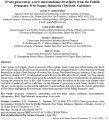 Eviota Gunawanae Eviota Gunawanae |
1554753236 Author(s): David W Greenfield, Luke Tornabene, Mark V. Erdmann, Defy N. Pada Tags: Description: A new species of dwarfgoby, Eviota gunawanae, with a cephalic sensory-canal pore pattern lacking only the IT and NA pores and with the AITO pore positioned far forward and opening anteriorly, is described from the Fakfak Peninsula in the Bird’s Head Seascape of western New Guinea, West Papua Province, Indonesia. It has a dorsal/ anal-fin-ray formula of 8/7, 16 unbranched pectoral-fin rays, the fifth pelvic-fin ray present, very long anterior tubular nares, a distinctive double black spot at the caudal-fin base, and no narrow horizontal line of melanophores crossing the pectoral-fin base. In life, it has a maroon stripe down the midline of the body, with elongate white spots above it posteriorly and two white lines over the abdomen. E. gunawanae is most closely related to E. tetha. The new species appears to represent the eighth known microendemic fish species from this remote reef location in West Papua, highlighting the biodiversity conservation importance of the Fakfak Peninsula’s reefs. 2.4 MiB |
1585 |
 Yuanike Et Al 2019 Dampier Hard Corals Yuanike Et Al 2019 Dampier Hard Corals |
1554752237 Author(s): Yuanike, Fredinan Yulianda, Dietriech G. Bengen, Rokhmin Dahuri, Jemmy Souhoka Tags: Description: Hard coral dominates coral reef ecosystems and has important functions and interactions in communities of marine biota. The structure and diversity of hard coral communities is very important to quantify, especially for the management of coral reef ecosystems. The purpose of this research is to identify the diversity of hard coral types, and quantify the condition of hard coral and their distributions in 10 marine stations in Dampier Straits Marine Protected Areas, Raja Ampat. The research method used was line intercept transects measured at two depths, 3 m and 6 m. The results showed there were 141 hard coral species included in 16 families. The percentage live cover of hard coral was in good conditions with an overall average coverage value of 64,24%. The biodiversity index (H) ranged from 0,84-1,23, the evenness index of species ranged from 0,73-0,94, and the species dominance index ranged from 0,05-0,25, indicating a high biodiversity and a lack of dominance by a single species. Although cover was slightly higher at 3m depth, diversity was slightly higher at 6m depth. In general, the 10 research stations in Dampier Straits has hard coral in good condition and the diversity of hard coral species is very productive and has stable growth compared with other sites in Indonesia. 0.5 MiB |
946 |
 Two new species of blue-eyed Trimma (Pisces; Gobiidae) from New Guinea Two new species of blue-eyed Trimma (Pisces; Gobiidae) from New Guinea |
1550521483 Author(s): Richard Winterbottom and Mark Erdmann Tags: Description: Two new species of Trimma are described from New Guinea, one at the southeastern end at Normanby Island (Milne Bay Province), the other from Cendrawasih Bay, West Papua, on the north-east coast. The dorsal surface of the eye of both species is blue in life, a characteristic not reported elsewhere in the genus. Although the two species look very similar in life, and both occupy similar mesophotic rubble habitats in the 50-70 m depth range, they are separated both genetically (7.7% pairwise genetic distance in COI) and morphologically. Trimma blematium has 16 pectoral fin rays, a branched 5th pelvic fin ray, and 7 papillae in row p, whereas T. meityae has 17–18 pectoral fin rays, an unbranched 5th pelvic fin ray, and 8 papillae in row p. In live specimens, the blue colour over the top of the eyes is much darker in T. blematium than in T. meityae. The type localities are separated by almost 2,000 km (straight-line distance). 5.4 MiB |
1349 |
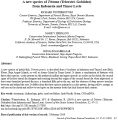 A new species of Trimma (Teleostei: Gobidae) from Indonesia and Timor Leste A new species of Trimma (Teleostei: Gobidae) from Indonesia and Timor Leste |
1550520736 Author(s): Richard Winterbottom, Mark Erdmann, Ronald Mambrasar Tags: Description: A new species of gobiid fish, Trimma putrai, is described from 4 localities in Indonesia and Timor-Leste (Bali, Flores, Raja Ampat Islands, as well as Atauro Island in Timor-Leste). It shares a combination of features with three other species: scales present on the predorsal midline and upper opercle; no scales on the cheek; the second spine of the first dorsal fin elongate and reaching beyond the origin of the second dorsal fin when adpressed; at least some branched pectoral-fin rays; a branched fifth pelvic-fin ray; and the absence of deep narrow trenches between and behind the eyes. It differs from the three species primarily in color pattern, having yellow, orange, or red bars on the cheek and yellow-to-red spots on the anterior body that lack discrete dark centers. 2.0 MiB |
1483 |
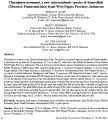 Chrysiptera uswanasi Chrysiptera uswanasi |
1543602884 Author(s): Gerald R. Allen, Mark V. Erdmann, N. K. Dita Cahyani Tags: Description: Chrysiptera uswanasi, n. sp., the seventh member of the Chrysiptera oxycephala species complex of Pomacentridae, is described on the basis of 10 specimens, 24.7–45.3 mm SL, collected at the Fakfak Peninsula of New Guinea (West Papua Province, Indonesia). The new taxon is a microendemic species, found only in a small area around the Fakfak Peninsula. 1.7 MiB |
1182 |
 Pomacentrus bellipictus, a new microendemic species of damselfish (Pisces: Pomacentridae) from the Fakfak Peninsula, West Papua, Indonesia Pomacentrus bellipictus, a new microendemic species of damselfish (Pisces: Pomacentridae) from the Fakfak Peninsula, West Papua, Indonesia |
1534459944 Author(s): Gerald R. Allen, Mark V. Erdmann, Nur I. Hidayat Tags: Description: A new species of damselfish, Pomacentrus bellipictus, is described from 13 specimens, 37.7–67.9 mm SL, collected at the Kokas area of the Fakfak Peninsula, a portion of the Bird’s Head Peninsula of western New Guinea (West Papua Province, Indonesia). 6.5 MiB |
1632 |
 Pseudochromis Stellatus1 Pseudochromis Stellatus1 |
1534459515 Author(s): ANTHONY C. GILL, GERALD R. ALLEN, & MARK V. ERDMANN Tags: Description: Fishes of the Indo-Pacific genus Pseudochromis Rüppell (1835) were revised by Gill (2004), who recognised 57 species. Fourteen new species have been described subsequently (see Gill & Senou 2016), taking the total number of described species in the genus to 71. Additional potentially new species from the Coral Triangle region are currently under study by the present authors. We herein describe one such species, collected from the Raja Ampat Islands, West Papua Province, Indonesia. 0.6 MiB |
853 |
 Two new species of blue-eyed Trimma (Pisces; Gobiidae) from New Guinea Two new species of blue-eyed Trimma (Pisces; Gobiidae) from New Guinea |
1534459243 Author(s): Richard Winterbottom and Mark Erdmann Tags: Description: Two new species of Trimma are described from New Guinea, one at the southeastern end at Normanby Island (Milne Bay Province), the other from Cendrawasih Bay, West Papua, on the north-east coast. 5.4 MiB |
1136 |
 Higher Abundance Of Marine Predators And Changes In Fishers' Behavior Following Spatial Protection Within The World's Biggest Shark Fishery Higher Abundance Of Marine Predators And Changes In Fishers' Behavior Following Spatial Protection Within The World's Biggest Shark Fishery |
1525882644 Author(s): Vanessa Jaiteh, Steve Lindfield, Sangeeta Mangubhai, Carol Warren, Ben Fitzpatrick, Neil Loneragan Tags: Description: Fisheries are complex social-ecologial systems, where managers struggle to balance the socio-economic interests of fishing communities with the biology and ecology of fisheries species. Spatial closures are a popular measure to address conservation and fisheries management goals; including the protection of shark populations. Placing the context of the research in Indonesia –the global center of tropical marine biodiversity, where the country contributes more to the international shark fin trade than any other country-cum-exporter, the Authors addressed the effectiveness of shark-specific closures to protect sharks, or their impacts on fisher’s behavior. The Authors assessed shark diversity and abundance in an Open Access Zone (OAZ) and two No-Take Zones (NTZs) of a Marine Protected Area (MPA)within the recently-established “Shark Sanctuary” in Raja Ampat, Indonesia; where sharks have high monetary value as a tourism attraction. This Work also highlights interviews with shark fishers, and the changes in their behavior subsequent to the designation of “Shark Sanctuary.” 3.1 MiB |
1468 |
 Multi-locus sequence data reveal a new species of coral reef goby (Teleostei: Gobiidae: Eviota), and evidence of Pliocene vicariance across the Coral Triangle Multi-locus sequence data reveal a new species of coral reef goby (Teleostei: Gobiidae: Eviota), and evidence of Pliocene vicariance across the Coral Triangle |
1502740493 Author(s): L. Tornabene, S. Valdez, M. V. Erdmann and F. L. Pezold Tags: dwarfgoby; Indo Australian Archipelago; Indo Malay Archipelago; Description: Here, multi-locus sequence data are coupled with observations of live colouration to recognize a new species, Eviota punyit from the Coral Triangle, Indian Ocean and Red Sea. Relaxed molecular clock divergence time estimation indicates a Pliocene origin for the new species, and the current distribution of the new species and its sister species Eviota sebreei supports a scenario of vicariance across the Indo-Pacific Barrier, followed by subsequent range expansion and overlap in the Coral Triangle. These results are consistent with the ‘centre of overlap’ hypothesis, which states that the increased diversity in the Coral Triangle is due in part to the overlapping ranges of Indian Ocean and Pacific Ocean faunas. These findings are discussed in the context of other geminate pairs of coral reef fishes separated by the Indo-Pacific Barrier. 4.1 MiB |
2482 |
 Sueviota bryozophila, a new species of coral-reef goby from Indonesia (Teleostei: Gobiidae) Sueviota bryozophila, a new species of coral-reef goby from Indonesia (Teleostei: Gobiidae) |
1502740261 Author(s): Gerald R. Allen, Mark V. Erdmann, N. K. Dita Cahyani Tags: new species Description: A new species of gobiid fish, Sueviota bryozophila, is described from Indonesia, at Ambon, Molucca Islands and Lembeh Strait, North Sulawesi, on the basis of six specimens, 9.9–13.2 mm SL. The new species differs from the other four members of the Indo-Pacific genus by having reduced sensory pores on the dorsal surface of the head, with only paired pores at the mid-interorbital, and by having four pelvic-fin rays unbranched and a single branching of the fifth ray. 1.9 MiB |
1467 |
 Observations on Australian Humpback Dolphins (Sousa sahulensis) in Waters of the Pacific Islands and New Guinea Observations on Australian Humpback Dolphins (Sousa sahulensis) in Waters of the Pacific Islands and New Guinea |
1502739835 Author(s): Isabel Beasley, Maria Jedensjo, Gede Mahendra Wijaya, Jim Anamiato, Benjamin Kahn, Danielle Kreb Tags: Papua, dolphin Description: The Australian humpback dolphin, Sousa sahulensis, has recently been described to occur in northern Australian coastal waters. However, its distribution in adjacent waters of the Pacific Islands and New Guinea remains largely unknown. 15.9 MiB |
1 |
 Pseudotrichonotus caeruleoflavus, a new species of reef fish from Indonesia (Teleostei: Aulopiformes: Pseudotrichonotidae) Pseudotrichonotus caeruleoflavus, a new species of reef fish from Indonesia (Teleostei: Aulopiformes: Pseudotrichonotidae) |
1502739551 Author(s): Gerald R. Allen, Mark V. Erdmann, Sasanti R. Suharti,Abraham Sianipar Tags: new species Description: A new species of pseudotrichonotid, Pseudotrichonotus caeruleoflavus, is described from four specimens, 31.3-33.7 mm SL, collected while scuba diving in the Lesser Sunda Islands of Indonesia at southern Flores. It was also photographed at Misool in the Raja Ampat Islands of West Papua Province. 0.3 MiB |
2 |
 Helcogramma atauroensis, a new species of triplefin from Ataúro Island, Timor-Leste, eastern Indian Ocean (Teleostei: Tripterygiidae) Helcogramma atauroensis, a new species of triplefin from Ataúro Island, Timor-Leste, eastern Indian Ocean (Teleostei: Tripterygiidae) |
1502738601 Author(s): Ronald Fricke, Mark V. Erdmann Tags: taxonomy, coral reef fishes, ichthyology, systematics, Indo-Pacific Ocean, blennies Description: A new species of triplefin blenny, Helcogramma atauroensis, from Timor-Leste is described on the basis of eight specimens. Revised keys to the H. steinitzi species complex and to all members of the genus in the western Pacific Ocean and Indo-Australian Archipelago are presented. 3.7 MiB |
1635 |
 Eviota imitata, a new dwarfgoby from Raja Ampat, Indonesia (Teleostei: Gobiidae) Eviota imitata, a new dwarfgoby from Raja Ampat, Indonesia (Teleostei: Gobiidae) |
1502737681 Author(s): David W Greenfield, Luke Tornabene, Dr. Mark V Erdmann Tags: Raja Ampat, taxonomy, coral reef fishes, ichthyology, systematics, gobies, Indo-Pacific Ocean Description: A new species of dwarfgoby, Eviota imitata n. sp., is described from Raja Ampat, West Papua, Indonesia, based on the holotype and 8 paratypes. 4.6 MiB |
1728 |
 Species Richness and Relative Abundance of Reef-Building Corals in the Indo-West Pacific Species Richness and Relative Abundance of Reef-Building Corals in the Indo-West Pacific |
1502737323 Author(s): Lyndon DeVantier and Emre Turak Tags: coral; species richness; relative abundance; Indo-West Pacific; IUCN Red List Description: Scleractinian corals, the main framework builders of coral reefs, are in serious global decline, although there remains significant uncertainty as to the consequences for individual species and particular regions. We assessed coral species richness and ranked relative abundance across 3075 depth-stratified survey sites, 8.3 MiB |
1737 |
 Review of the Indo-Pacific Flasherwrasses of the genus Paracheilinus(Perciformes: Labridae), with descriptions of three new species Review of the Indo-Pacific Flasherwrasses of the genus Paracheilinus(Perciformes: Labridae), with descriptions of three new species |
1502733895 Author(s): Dr Gerald R Allen, Dr. MV Erdmann, Ni Luh Astria Yumalinda Tags: new species, taxonomy, coral reef fishes, ichthyology, flasher wrasse, DNA barcoding, wrasses, phylogenetics Description: The Indo-Pacific labrid fish genus Paracheilinus now contains 20 species. Most of the currently known species inhabit the mega-diverse East Indian region including Paracheilinusangulatus, P. carpenteri, P. cyaneus, P. filamentosus, P. flavianalis, P. lineopunctatus, P. nursalim, P. rennyae, P. togeanensis, P. walton, as well as three recent discoveries described as new species herein. In addition to the new species descriptions, a diagnosis and color illustrations are included for all members of the genus. We also present a key to the species and a neighbor-joining tree of mitochondrial DNA sequences which clarifies the genetic relationships among species, revealing four discrete species complexes within the genus. 17.2 MiB |
1127 |
 The Goldiei group of rainbowfishes (Melanotaeniidae) from the Birds Neck Region of New Guinea (Papua and West Papua Provinces, Indonesia) with descriptions of five new species and recognition of Melanotaenia dumasi Weber The Goldiei group of rainbowfishes (Melanotaeniidae) from the Birds Neck Region of New Guinea (Papua and West Papua Provinces, Indonesia) with descriptions of five new species and recognition of Melanotaenia dumasi Weber |
1502733437 Author(s): Gerald R. Allen, Peter J. Unmack and Renny K. Hadiaty Tags: new species, West Papua, rainbow fishes Description: Genetic investigations reveal the closely-related “Goldiei”group of melanotaeniids from the Birds Neck region ofwestern New Guinea contains at least six species, including five new taxa, which are described herein. 0.7 MiB |
1 |
 5 New Species Of Forams From Raja 5 New Species Of Forams From Raja |
1502732705 Author(s): Meena Förderer and Martin R. Langer Tags: Raja Ampat, Indonesia, Coral Triangle, Foraminifera, Tropical reefs, Benthic, Protists Description: Raja Ampat is an archipelago of about 1,500 small islands located northwest off the Bird's Head Peninsula of Indonesia's West Papua province. It is part of the Coral Triangle, a region recognized as the ``epicenter'' of tropical marine biodiversity. In the course of a large-scale survey on shallow benthic foraminifera we have discovered one new genus and five new species of recent miliolid benthic foraminifera from the highly diverse reefal and nearshore environments. All new species are comparatively rare and occur sporadically in the sample material. Detailed morphological descriptions, scanning electron microscopy pictures of complete and dissected specimens as well as microcomputed tomography images are provided. 13.7 MiB |
941 |
 Review of the bamboo shark genus Hemiscyllium (Orectolobiformes: Hemiscyllidae) Review of the bamboo shark genus Hemiscyllium (Orectolobiformes: Hemiscyllidae) |
1478545504 Author(s): Gerald Allen, Mark Erdmann, William White, Fahmi, Christine Dudgeon Tags: Description: The bamboo sharks, genus Hemiscyllium, comprises a group of nine species mainly restricted to New Guinea and northern Australia, including islands, reefs, and shoals separated from mainland areas by shallow seas. The Indonesian island of Halmahera is the only location lying outside the core region that is inhabited by these sharks. The nine species in the genus are reviewed and their approximate distribution documented, as follows: H. freycineti (Raja Ampat Islands, West Papua); H. galei (Cenderawasih Bay, West Papua); H. hallstromi (Torres Strait, Australia and southeastern Papua New Guinea); H. halmahera (Halmahera, Indonesia); H. henryi (vicinity of Triton Bay, West Papua); H. michaeli (Milne Bay Province, Papua New Guinea); H. ocellatum (northeastern Queensland, Australia); H. strahani (central coast of northern New Guinea); and H. trispeculare (northwestern Australia and Aru Islands, Indonesia). The most reliable means of identi cation is color pattern, in combination with geographic distribution: morphology is less useful due to considerable morphological variation, mostly re ecting the highly variable condition of preserved specimens, and meristic comparisons are limited by mostly small sample sizes. Therefore, a key to species based on color pattern is presented, as well as comprehensive illustrative coverage for each species. 18.4 MiB |
3 |
 Review of the Chrysiptera oxycephala complex of damselfishes (Pomacentridae) with descriptions of three new species from the East Indian Archipelago Review of the Chrysiptera oxycephala complex of damselfishes (Pomacentridae) with descriptions of three new species from the East Indian Archipelago |
1454541662 Author(s): Allen, Erdmann & Cahyani Tags: Description: The nominal species Chrysiptera oxycephala has been considered a widespread species in the East Indian Archipelago, but genetic analyses and a closer examination of populations throughout the region now show it to be another example of a species complex of closely related parapatric cryptic species and genovariant populations. Three DNA lineages correlate with different color patterns and are described here as new species, including Chrysiptera ellenae (Raja Ampat, West Papua, Indonesia), Chrysiptera maurineae (Cenderawasih Bay, West Papua, Indonesia), and Chrysiptera papuensis (northeastern Papua New Guinea). 3.9 MiB |
2064 |
 Raja Ampat Cetacean Species List 2011-2015 Raja Ampat Cetacean Species List 2011-2015 |
1444929689 Author(s): Benjamin Kahn Tags: Raja Ampat, conservation, Bird's Head Seascape, West Papua, Indonesia, cetaceans, Species Count, species, whales Description: A comprehensive report on the number of cetacean species encountered in Raja Ampat during surveys conducted from 2011-2015 by Benjamin Kahn of Apex Environmental. 0.3 MiB |
967 |
 DNA Barcoding Shark Indonesia-91x120.jpg) DNA barcoding reveals targeted fisheries for endangered sharks in Indonesia DNA barcoding reveals targeted fisheries for endangered sharks in Indonesia |
1442853188 Author(s): Andrianus Sembiring; Ni Putu Dian Pertiwi; Angka Mahardini; Rizki Wulandari; Eka Maya Kurniasihb, Andri Wahyu Kuncoroc, N.K. Dita Cahyania, Aji Wahyu Anggoroa, Maria Ulfad, Hawis Madduppa, Kent E. Carpenter, Paul H. Barber, Gusti Ngurah Mahardikaa, Tags: West Papua, Indonesia, Shark, DNA barcoding Description: Sharks are apex predators and keystone species that have a profound influence on the ecology and food-web dynamics of coral reefs and epipelagic marine ecosystems. However, sharks are being heavily overfished compromising the health of the world’s reefs and pelagic environments. Although Indonesia is the world’s largest and most diverse coral reef ecosystem, information on the exploitation of sharks in this region is scarce. Results of DNA barcoding of shark fin revealed two alarming findings: (1) a rarity of reef sharks that should dominate Indonesia’s coastal ecosystems, and (2) a fishery that targets endangered sharks. The diversity and number of threatened species recovered in this study highlights the urgent need for improved regulation and control of Indonesia’s shark fishery. 0.7 MiB |
1 |
 New species of Trimma (Actinopterygii, Gobiidae) from Indonesia, with comments on head papillae nomenclature New species of Trimma (Actinopterygii, Gobiidae) from Indonesia, with comments on head papillae nomenclature |
1442853006 Author(s): RICHARD WINTERBOTTOM; MARK V. ERDMANN; N. K. DITA CAHYANI Tags: West Papua, Cenderawasih Bay, Triton Bay, Trimma aturirii, Trimma trioculatum, Trimma kardium Description: Three new species of the gobiid Trimma are described from Indonesian waters, and a partially reformulated nomenclature for the cephalic sensory papillae of members of this genus is provided. 13.4 MiB |
3 |
 Overview of coral distributions-92x120.jpg) Overview of distribution patterns of zooxanthellate Scleractinia Overview of distribution patterns of zooxanthellate Scleractinia |
1442852513 Author(s): John Veron; Mary Stafford-Smith; Lyndon DeVantier; Emre Turak Tags: Bird's Head Seascape, Coral Triangle, diversity, biogeography, species, coral, distributions, affinity Description: This publication is an overview of a detailed study of coral distribution,diversity and affinities worldwide. Original surveys by the authors cover 4941 sites in 85 eco regions worldwide. These are combined with a thorough summation of all biogeographic, taxonomic and related literature as well as an extensive review of museum and photographic collections worldwide and extensive inter-personal communications. 16.2 MiB |
1347 |
 Rainbowfishes (Melanotaenia: Melanotaeniidae) of the Aru Islands, Indonesia with descriptions of five new species and redescription of M. patoti Weber and M. senckenbergianus Weber Rainbowfishes (Melanotaenia: Melanotaeniidae) of the Aru Islands, Indonesia with descriptions of five new species and redescription of M. patoti Weber and M. senckenbergianus Weber |
1442852126 Author(s): Gerald Allen; Peter Unmack; Renny Hadiaty;Mark V. Erdmann Tags: endemic, taxonomy, rainbowfish, biogeography, Aru, species flock Description: The Aru Archipelago is a relict of the former land bridge connecting Australia and New Guinea and its freshwater Melanotaenia strongly reflect this past connection.Sea level changes over the past 2-3 million years have apparently provided sufficient isolation for the radiation of a mini species flock consisting of at least seven species. Melanotaenia patoti and M. senckenbergianus were described from the islands by Weber in the early 1900s, but subsequently considered as junior synonyms of the New Guinea mainland species M. rubrostriata and M. goldiei respectively. Recent collections by the authors facilitated a reassessment of their status based on morphological and genetic investigations, consequently both are here recognised as valid and redescriptions are provided. In addition, the current study reveals the existence of five new taxa described herein. 18.0 MiB |
3951 |
 MELANOTAENIA RUBRIVITTATA, A NEW SPECIES OF RAINBOWFISH (MELANOTAENIIDAE) FROM NORTHWESTERN PAPUA PROVINCE, INDONESIA MELANOTAENIA RUBRIVITTATA, A NEW SPECIES OF RAINBOWFISH (MELANOTAENIIDAE) FROM NORTHWESTERN PAPUA PROVINCE, INDONESIA |
1442851916 Author(s): Gerald Allen; Peter Unmack; Renny Hadiaty Tags: endemic, rainbowfish, Papua, Nabire Description: A new species of melanotaeniid rainbowfish, Melanotaenia rubrivittata, is described from the Wapoga River system of northwestern Papua Province, Indonesia. 0.5 MiB |
4105 |
 Cirrhilabrus marinda, a new species of wrasse (Pisces: Labridae) from eastern Indonesia, Papua New Guinea, and Vanuatu Cirrhilabrus marinda, a new species of wrasse (Pisces: Labridae) from eastern Indonesia, Papua New Guinea, and Vanuatu |
1442851060 Author(s): Gerald Allen; Mark Erdmann; Muhammad Dailami Tags: Raja Ampat, systematics, Ayau, Fairy wrasse, cryptic species, Bupati Marcus Wanma; Wakil Bupati Indra Arfan Description: A new species of labrid, Cirrhilabrus marinda, is described from 29 type specimens, 17.4–45.9 mm SL, collected at Ayau Atoll, West Papua Province, Indonesia and 7 non-type specimens, 32.0–67.0 mm SL, from Halmahera,Indonesia and the vicinity of Espiritu Santo, Vanuatu. 11.0 MiB |
1667 |
 Chrysiptera caesifrons, a new species of damselfish (Pomacentridae) from the south-western Pacific Ocean Chrysiptera caesifrons, a new species of damselfish (Pomacentridae) from the south-western Pacific Ocean |
1442850880 Author(s): Gerald Allen; Mark Erdmann; Eka Kurniasih Tags: damselfish; Raja Ampat; Chrysiptera rex; biogeography; cryptic species Description: Chrysiptera caesifrons is described on the basis of 23 type specimens, 23.3–48.5 mm SL, from the Raja Ampat Islands (West Papua Province), Indonesia, and 184 additional non-types, 17.8–60.7 mm SL, from Papua New Guinea, Vanuatu, New Caledonia, and the Great Barrier Reef of Australia. Additional records based on photographic evidence and underwater observations include Halmahera and the Solomon Islands. 7.7 MiB |
3495 |
 Acentrogobius limarius, a new species of goby (Pisces: Gobiidae) from West Papua Province, Indonesia Acentrogobius limarius, a new species of goby (Pisces: Gobiidae) from West Papua Province, Indonesia |
1442850581 Author(s): Dr. Gerald Allen, Dr. Mark V. Erdmann, Renny K. Hadiaty Tags: Raja Ampat, new species, goby, Batanta Description: A new species belonging to the gobiid genus Acentrogobius is described from mud-bottom habitat in 26 meter's depth on the island of Batanta in the Raja Ampat Islands of West Papua, Indonesia 7.1 MiB |
2736 |
 Festucalex rufus, a new species of pipefish (Syngnathidae) from Milne Bay Province, Papua New Guinea Festucalex rufus, a new species of pipefish (Syngnathidae) from Milne Bay Province, Papua New Guinea |
1428939362 Author(s): Mark V. Erdmann and Gerald R. Allen Tags: PNG, pipefish, Milne Bay, Festucalex Description: A new species of syngnathid pipefish, Festucalex rufus is described from Milne Bay Province, Papua New Guinea on the basis of four specimens, 26.5-37.8 mm SL collected from coral reef habitat in 10-20 m depth. 0.4 MiB |
3502 |
 Cercamia melanogaster, a new species of cardinalfish (Apogonidae) from West Papua, Indonesia Cercamia melanogaster, a new species of cardinalfish (Apogonidae) from West Papua, Indonesia |
1428939205 Author(s): Gerald Allen; Mark Erdmann; Angka Mahardini Tags: Raja Ampat, endemic, Kaimana, cardinalfish Description: A new species of apogonid, Cercamia melanogaster, is described from 11 specimens, 17.1–28.0 mm SL, collected in 15–42 m in the Bird’s Head region of West Papua Province, Indonesia. Genetic evidence is provided to show a high level of divergence in the mtDNA COI marker between the three recognized species in Cercamia, including the new taxon, C. cladara, and C. eremia. 7.2 MiB |
2490 |
 Atelomycterus erdmanni, a new species of catshark (Scyliorhinidae: Carcharhiniformes) from Indonesia Atelomycterus erdmanni, a new species of catshark (Scyliorhinidae: Carcharhiniformes) from Indonesia |
1428938981 Author(s): Fahmi; William White Tags: taxonomy, research, catshark, Lembeh, Ambon Description: A new species of catshark of the genus Atelomycterus is described from eastern Indonesia based on two type specimens. Atelomycterus erdmanni is closely related to A. baliensis and A. marmoratus, being sympatric with the latter. 4.3 MiB |
3111 |
 Support for a ‘Center of Origin’ in the Coral Triangle: Cryptic diversity, recent speciation, and local endemism in a diverse lineage of reef fishes (Gobiidae: Eviota) Support for a ‘Center of Origin’ in the Coral Triangle: Cryptic diversity, recent speciation, and local endemism in a diverse lineage of reef fishes (Gobiidae: Eviota) |
1416213693 Author(s): Luke Tornabene; Samantha Valdez; Mark Erdmann; Frank Pezold Tags: Raja Ampat, Cendrawasih Bay, Phylogeography, Eviota, Phylogeny, Evolution, mtDNA, Sympatric speciation Description: The Coral Triangle is widely regarded as the richest marine biodiversity hot-spot in the world. One factor that has been proposed to explain elevated species-richness within the Coral Triangle is a high rate of in situ speciation within the region itself. Dwarfgobies (Gobiidae: Eviota) are a diverse genus of diminutive cryptobenthic reef fishes with limited dispersal ability, and life histories and ecologies that increase potential for speciation. We use molecular phylogenetic and biogeographic data from two clades of Eviota species to examine patterns, processes and timing associated with species origination within the Coral Triangle. 2.4 MiB |
1 |
 A New Species of the Cardinalfish genus Siphamia (Perciformes, Apogonidae) from West Papua, Indonesia A New Species of the Cardinalfish genus Siphamia (Perciformes, Apogonidae) from West Papua, Indonesia |
1416212467 Author(s): OFER GON; GERALD R. ALLEN; MARK V. ERDMANN; GAVIN GOUWS Tags: West Papua, endemic, Misool, cardinalfish, light organ Description: A new species of the cardinalfish genus Siphamia is described from specimens collected in the Province of West Papua, Indonesia, at depths of 50–72 m. 3.2 MiB |
2 |
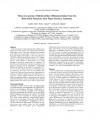 Three new species of Rainbowfishes (Melanotaeniidae) from the Birds Head Peninsula, West Papua Province, Indonesia Three new species of Rainbowfishes (Melanotaeniidae) from the Birds Head Peninsula, West Papua Province, Indonesia |
1416211844 Author(s): Gerald Allen; Peter Unmack; Renny Hadiaty Tags: endemic, rainbowfish, Melanotaenia, Bird's Head Peninsula, Sisiah, Aifuf, Kladuk Description: Three new species of melanotaeniid rainbowfishes are described from fresh waters of the Birds Head Peninsula, West Papua Province, Indonesia. 0.6 MiB |
2 |
-84x120.jpg) Pleistocene diversification of the Pomacentrus coelestis species complex (Pisces: Pomacentridae): historical biogeography and species boundaries Pleistocene diversification of the Pomacentrus coelestis species complex (Pisces: Pomacentridae): historical biogeography and species boundaries |
1410976959 Author(s): Laurie Sorenson, Gerald R. Allen, Mark V. Erdmann, Chang-Feng Dai & Shang- Yin Vanson Liu Tags: Raja Ampat, Cenderawasih Bay, damselfish, Pomcnetrus coelestis, diversification, Pleistocene Description: Pleistocene eustatic changes in sea level are often invoked to explain genetic divergence among marine organisms. However, molecular phylogenies have revealed relatively few examples of speciation events dating to the Pleistocene. We present a species-level hypothesis of the timing of evolution for the Pomacentrus coelestis species complex (Pomacentridae), based on the nuclear S7 intron and the mitochondrial Cytb gene, and reconstruct ancestral range distributions across the timetree. 1.2 MiB |
2 |
 Three new species of Trimma (Pisces; Gobioidei) from Indonesia Three new species of Trimma (Pisces; Gobioidei) from Indonesia |
1405975923 Author(s): RICHARD WINTERBOTTOM; MARK V. ERDMANN; N. K. DITA CAHYANI Tags: Raja Ampat, goby, Trimma, pajama, meranyx, zurae, North Sulawesi Description: Three new species of Trimma are described from various localities in Indonesia. All three can be readily identified from their live, freshly collected, or preserved colouration. 8.4 MiB |
3 |
 Phylogeography of commercial tuna and mackerel in the Indonesian Archipelago Phylogeography of commercial tuna and mackerel in the Indonesian Archipelago |
1405612783 Author(s): Alexis Jackson; Ambariyanto; Mark Erdmann; Abdul Toha; Luke Stevens; Paul Barber Tags: Papua, population genetics, tuna, mackerel, Pleistocene vicariance, Halmahera Eddy Description: While numerous population genetics studies have investigated phylogeographic patterns of coral reef organisms in the Coral Triangle, few have addressed whether fishes in the pelagic environment exhibit concordant patterns of genetic subdivision. We analyzed approximately 400 base pairs of the mitochondrial control region to compare population structure and phylogeography of five pelagic tuna and mackerel within a subset of their geographic ranges (i.e., the Indonesian Archipelago). 1.4 MiB |
2404 |
 Eviota tetha, a new species of dwarfgoby from Cenderawasih Bay, West Papua, Indonesia (Teleostei: Gobiidae) Eviota tetha, a new species of dwarfgoby from Cenderawasih Bay, West Papua, Indonesia (Teleostei: Gobiidae) |
1405612617 Author(s): Dave Greenfield; Mark Erdmann Tags: West Papua, endemic, Cenderawasih Bay, dwarfgoby, Tetha Hitipeuw Description: A new species of dwarfgoby, Eviota tetha, with a cephalic sensory-canal pore pattern lacking only the IT and NA pores and with the AITO pore positioned far forward and opening anteriorly, is described from Cenderawasih Bay, West Papua, Indonesia. 7.2 MiB |
1526 |
 Concordant Phylogenetic Patterns Inferred From Mitochondrial And Microsatellite DNA In Giant Clam Tridacna crocea Concordant Phylogenetic Patterns Inferred From Mitochondrial And Microsatellite DNA In Giant Clam Tridacna crocea |
1405612365 Author(s): Timery DeBoer; Ma Rio Naguit; Mark Erdmann; Maria Carmen Ablan-Lagman; Ambariyanto; Kent Carpenter; Abdul Toha; Paul Barber Tags: Cenderawasih Bay, Tridacna crocea, cryptic species, phylogeographic structure Description: The boring giant clam, Tridacna crocea Lamarck, 1819, is a CITES-listed bivalve that is declining due to overharvest and environmental degradation. Previous molecular studies in the Coral Triangle using mitochondrial DNA indicated the presence of deep phylogenetic divergence and strong phylogeographic structure across this region, suggesting the possibility of multiple cryptic species. In the present study, we compare data from non-recombining mitochondrial (mtDNA; cytochrome oxidase subunit 1, COI) and eight microsatellite loci to better understand patterns of genetic structure and species boundaries in T. crocea populations across Indonesia and the Philippines. 3.9 MiB |
3003 |
 Concordance Between Phylogeographic And Biogeographic Boundaries In The Coral Triangle Concordance Between Phylogeographic And Biogeographic Boundaries In The Coral Triangle |
1405612034 Author(s): Timery DeBoer; Ma Rio Naguit; Mark Erdmann; Maria Carmen Ablan-Lagman; Ambariyanto; Kent Carpenter; Abdul Toha; Paul Barber Tags: Cenderawasih Bay, Coral Triangle, giant clams, Tridacna squamosa, crocea, maxima, marine ecoregions, phylogeographic patterns Description: Marine habitats are in decline worldwide, precipitating a strong interest in marine conservation. The use of biogeographic data to designate ecoregions has had significant impacts on terrestrial conservation efforts. However, classification of marine environments into ecoregions has only become available in the last several years, based on biogeographic data supplemented by geomorphology, ocean currents, and water temperatures. Here we use a comparative phylogeographic approach to test for concordant phylogeographic patterns in three closely related species of Tridacna giant clams across the Coral Triangle, the most biodiverse marine region in the world and one of the most threatened. 2.8 MiB |
2224 |
 Phylogeography And Limited Genetic Connectivity In The Endangered Boring Giant Clam Across The Coral Triangle Phylogeography And Limited Genetic Connectivity In The Endangered Boring Giant Clam Across The Coral Triangle |
1401910304 Author(s): Timery DeBoer; Matthew Subia; Ambariyanto; Mark Erdmann; Katie Kovitvongsa; Paul Barber Tags: West Papua, Phylogeography, Tridacna crocea, Genetic Connectivity Description: The Coral Triangle is the global center of marine biodiversity; however, its coral reefs are critically threatened. Because of the bipartite life history of many marine species with sedentary adults and dispersive pelagic larvae, designing effective marine protected areas requires an understanding of patterns of larval dispersal and connectivity among geographically discrete populations. We used mtDNA sequence data to examine patterns of genetic connectivity in the boring giant clam (Tridacna crocea) in an effort to guide conservation efforts within the Coral Triangle. 0.3 MiB |
1 |
 Revision of the Indo-Pacific cardinalfish genus Siphamia (Perciformes: Apogonidae Revision of the Indo-Pacific cardinalfish genus Siphamia (Perciformes: Apogonidae |
1401910096 Author(s): Ofer Gon; Gerald Allen Tags: Kaimana, cardinalfish, revision, Siphamia stenotes Description: The Indo-Pacific apogonid genus Siphamia Weber 1909 is unique among cardinalfishes in having a bacterial bioluminescent system and spinoid scales. Light is produced by luminous bacteria found in a small pocket connected to the gut in the abdominal cavity and in a sac on each side of the tip of the tongue. Siphamia consists of 23 small species many of which are associated with invertebrates such as sea urchins, crown-of-thorns starfish and coral. Species of this genus fall into two main groups with different dark pigment pattern of the longitudinal translucent muscle acting as a light organ that diffuses light along the ventral edge of the body...In this paper we recognize 14 of 21 nominal Siphamia species as valid and we describe nine new species. 11.2 MiB |
2 |
 Three new species of the fangblenny genus Meiacanthus from Indonesia, with color photographs and comments on other species (Teleostei: Blenniidae: Nemophini) Three new species of the fangblenny genus Meiacanthus from Indonesia, with color photographs and comments on other species (Teleostei: Blenniidae: Nemophini) |
1401909077 Author(s): William Smith-Vaniz; Gerald Allen Tags: new species, fangblennies, Meiacanthus erdmanni, Meiacanthus abruptus, Meiacanthus cyanopterus Description: Three new species of fangblennies are described from Indonesia. An identification key is provided for all the striped species of Meiacanthus, including at least one additional undescribed species previously confused with M. abditus. Color photographs of other Meiacanthus species and some new distributional records are also given. 2.5 MiB |
3 |
 Pseudochromis erdmanni, a new species of dottyback with medially placed palatine teeth from Indonesia (Teleostei: Perciformes: Pseudochromidae) Pseudochromis erdmanni, a new species of dottyback with medially placed palatine teeth from Indonesia (Teleostei: Perciformes: Pseudochromidae) |
1401908554 Author(s): Anthony Gill; Gerald Allen; Mark Erdmann Tags: Raja Ampat, Indonesia, dottyback, Halmahera Description: Pseudochromis erdmanni is described from eight specimens from Halmahera, Ambon and the Raja Ampat Islands, Indonesia. It is also recorded from Lembeh Strait, Sulawesi, on the basis of photographs. 0.4 MiB |
1 |
 Two New Species of Striped Pseudochromis from the Philippine Islands and Indonesia, with a redescription of P. colei (Perciformes: Pseudochromidae) Two New Species of Striped Pseudochromis from the Philippine Islands and Indonesia, with a redescription of P. colei (Perciformes: Pseudochromidae) |
1401817564 Author(s): Anthony Gill; Gerald Allen; Mark Erdmann Tags: Raja Ampat, new species, dottyback, Max Ammer Description: Pseudochromis ammeri sp. nov. and P. eichleri sp. nov. are described from Indonesia (Raja Ampat Islands, West Irian and Halmahera) and the Philippines (Calamianes Group, Boracay and northern Palawan), respectively...The three species closely resemble each other but differ in live coloration and several scale count characters 0.9 MiB |
1 |
 Pentapodus numberii, a New Species of Whiptail (Pisces: Nemipteridae) from Eastern Indonesia Pentapodus numberii, a New Species of Whiptail (Pisces: Nemipteridae) from Eastern Indonesia |
1401817388 Author(s): Gerald Allen; Mark Erdmann Tags: Raja Ampat, Bird's Head Seascape, new species, endemic, Triton Bay, Cendrawasih Bay, whiptail Description: The present paper describes a new Pentapodus that was first encountered by the authors in Apr. 2006 during a Conservation International-sponsored marine biological expedition at Triton Bay, Papua Barat Province, Indonesia. 0.9 MiB |
1 |
 A New Cardinalfish of the Genus Apogonichthyoides (Perciformes, Apogonidae) from Raja Ampat Islands, with a key to species A New Cardinalfish of the Genus Apogonichthyoides (Perciformes, Apogonidae) from Raja Ampat Islands, with a key to species |
1401817225 Author(s): Thomas Fraser; Gerald Allen Tags: Raja Ampat, Misool, cardinalfish, Fiabacet Description: Another deep-water cardinal fish of the genus Apogonichthyoides is described from Fiabacet Island, Western Papua, Indonesia. 0.5 MiB |
4 |
 Concordant Phylogenetic Patterns In Tridacna crocea Concordant Phylogenetic Patterns In Tridacna crocea |
1401817029 Author(s): Timery DeBoer; Ma Rio Naguit; Mark Erdmann; Maria Ablan-Lagman; Ambariyanto;Kent Carpenter; Abdul Hamid Toha; Paul Barber Tags: Phylogeography, Tridacna crocea, microsatellite, genetic Description: The boring giant clam, Tridacna crocea Lamarck, 1819, is a CITES-listed bivalve that is declining due to overharvest and environmental degradation. Previous molecular studies in the Coral Triangle using mitochondrial DNA indicated the presence of deep phylogenetic divergence and strong phylogeographic structure across this region, suggesting the possibility of multiple cryptic species. In the present study, we compare data from non-recombining mitochondrial (mtDNA; cytochrome oxidase subunit 1, COI) and eight microsatellite loci to better understand patterns of genetic structure and species boundaries in T. crocea populations across Indonesia and the Philippines. 7.3 MiB |
0 |
 Comparative Phylogeography Of Two Seastars And Their Ectosymbionts In Coral Triangle Comparative Phylogeography Of Two Seastars And Their Ectosymbionts In Coral Triangle |
1401816396 Author(s): Eric Crandall; Elizabeth Jones; Martha Munoz; Bolanle Akinronbi; Mark Erdmann; Paul Barber Tags: Cenderawasih Bay, Coral Triangle, comparative phylogeography, Linckia laevigata, Thyca crystallina, Periclemenes soror, Protoreaster nodosus Description: Repeated exposure and flooding of the Sunda and Sahul shelves during Pleistocene sea-level fluctuations is thought to have contributed to the isolation and diversification of sea-basin populations within the Coral Triangle. This hypothesis has been tested in numerous phylogeographical studies, recovering an assortment of genetic patterns that the authors have generally attributed to differences in larval dispersal capability or adult habitat specificity. This study compares phylogeographical patterns from mitochondrial COI sequences among two co-distributed seastars that differ in their adult habitat and dispersal ability, and two seastar ectosymbionts that differ in their degree of host specificity. 0.8 MiB |
0 |
 Recently Discovered Landlocked Basins in Indonesia Reveal High Habitat Diversity in Anchialine Systems Recently Discovered Landlocked Basins in Indonesia Reveal High Habitat Diversity in Anchialine Systems |
1401816092 Author(s): Leontine Becking; Willem Renema; Nadiezhda Santodomingo; Bert Hoeksema; Yosephine Tuti; Nicole de Voogd Tags: Raja Ampat, marine lakes, anchialine, sponges, Berau Description: In this article, the variability of physical settings of anchialine systems in Indonesia is discussed together with the consequences these settings have for the environment and biota within the systems. Exploration in two karstic areas (Berau, East Kalimantan and Raja Ampat, West Papua) has resulted in the discovery of 20 previously unknown anchialine systems in Indonesia. 0.9 MiB |
4 |
 Strong Genetic Structure among Coral Populations within a Conservation Priority Region: The Bird's Head Seascape Strong Genetic Structure among Coral Populations within a Conservation Priority Region: The Bird's Head Seascape |
1401735977 Author(s): Craig Starger; Paul Barber; Mark Erdmann; Abdul Hamid Toha; Andrew Bakere Tags: MPAs, conservation planning, Genetic structure, Seriotopora hystrix Description: Marine Protected Areas (MPAs) are widely considered to be one of the best strategies available for protecting biodiversity and ecosystem processes in marine environments, particularly in developing, tropical nations. While data on connectivity and genetic structure of marine populations are critical to designing appropriately sized and spaced networks of MPAs, such data are rarely available. Here we present an assessment of genetic structure in reef- building corals from Papua and West Papua, Indonesia, among the most biologically diverse and least disturbed coral reef regions in the world, and the focus of the multi-institutional Bird's Head Seascape initiative to design and implement a functional network of MPAs. 0.8 MiB |
1694 |
 Reef Fishes East Indies Appendix 1 New Species Descriptions Reef Fishes East Indies Appendix 1 New Species Descriptions |
1401735760 Author(s): Gerald Allen; Mark Erdmann; Dita Cahyani; Elizabeth Jones-Sbrocco; Joshua Drew Tags: new species, endemic, Bird's Head, Acentrogobius cenderawasih, Tomiyamichthys nudus, T, Scorpaenodes bathycolus, Forcipiger wanai, Amblyglyphidodon flavopurpureus, Neoglyphidodon mitratus, Parapercis sagma, Pterapsaron longipinnis, Lepadichthys akiko Description: Includes descriptions of new taxa,collected during recent investigations in the East Indian region. Fourteen of these were taken at the Bird’s Head Peninsula of West Papua, Indonesia in connection with Conservation International-sponsored faunal surveys. The various new taxa are presented in phylogenetic order by family and in alphabetical order within families. 8.7 MiB |
6325 |
 Keanekaragaman Hayati Ikan Di Teluk Arguni Keanekaragaman Hayati Ikan Di Teluk Arguni |
1401735461 Author(s): Renny Hadiaty; Gerald Allen; Mark Erdmann Tags: Kaimana, keanekaragaman, ikan, Teluk Arguni, jenis, endemik Description: Lembaga Ilmu Pengetahuan Indonesia (LIPI) telah melakukan penelitian di wilayah Papua dengan nama ekspedisi Wilayah Nusantara (EWIN). Penelitian dilakukan selama dua tahun di wilayah Raja Ampat, Papua Barat. Pada tahun 2007 penelitian dilakukan di Pulau Waigeo, sedangkan tahun 2008 di Pulau Batanta. Hasil penelitian di kedua pulau tersebut mengindikasikan tingginya tingkat endemisitas dan beberapa diantaranya merupakan jenis baru. Sekalipun penelitian di wilayah Papua banyak mendapatkan hasil yang menarik, namun sayangnya tidak dapat dilanjutkan. Beranjak dari hasil tersebut berhasil dijalin kerjasama penelitian dengan Conservation International (CI) Indonesia Marine Program. Penelitian dilakukan di 24 stasiun penelitian di wilayah perairan Kaimana, Papua Barat. Hasilnya sangat menarik, diperoleh 55 jenis ikan dari 20 familia, tujuh jenis diantaranya diperkirakan merupakan jenis baru 5.3 MiB |
4320 |
 Ecology Of Papua Stomatopods excerpted from The Ecology of Papua, Marshall and Beehler, eds, 2007 Ecology Of Papua Stomatopods excerpted from The Ecology of Papua, Marshall and Beehler, eds, 2007 |
1401735096 Author(s): Mark Erdmann Tags: Bird's Head Seascape, checklist, stomatopod, crustacean, Vogelkop Description: The author has been sampling stomatopod crustaceans from around Indonesia and the Coral Triangle region for the past 14 years...Of all the areas studied, the Volkelkop region of north Papua, particularly the Raja Ampat Archipelago, is the most diverse so far. 2.3 MiB |
1865 |
-84x120.jpg) Pisces, Teleostei, Gobiidae, illustrated list of additions to the fauna of the Raja Ampat Islands, Indonesia Pisces, Teleostei, Gobiidae, illustrated list of additions to the fauna of the Raja Ampat Islands, Indonesia |
1401734831 Author(s): Rudi Dimara; Andi Fauzan; Muhammad Lazuardi; Defy Pada; Gerald Allen; Mark Erdmann; Christine Huffard; Laure Katz; Richard Winterbottom Tags: Raja Ampat, gobies, checklist, cryptofauna Description: Previous surveys of the reef-associated ichthyofauna of the Raja Ampat Islands in West Papua, Indonesia recorded a total of 1,320 species of reef fishes, including 271 species of Gobiidae. A recent survey focused on the cryptic gobies of Raja Ampat resulted in 36 new records (including nine species of both Trimma and Eviota). Sixteen of the new records are currently undescribed species, with seven of these identified as Raja Ampat endemics, while the remaining nine species are also known from localities outside Raja Ampat in the western Pacific. Five species previously recorded from the area have been re-identified, two of them representing undescribed species, and a new record from the literature has been added. This brings the total number of reef fishes known from Raja Ampat waters to 1,357, of which 308 belong to the Gobiidae. The number of species (including the undescribed taxa) apparently endemic to the Bird’s Head Peninsula of West Papua now totals 33. 3.4 MiB |
1815 |
 Descriptions Of Six New Trimma From Raja Ampat Descriptions Of Six New Trimma From Raja Ampat |
1401734697 Author(s): Rick Winterbottom Tags: Raja Ampat, new species, Trimma cheni, Trimma erdmanni, Trimma haimassum, Trimma xanthochrum, Trimma papayum, Trimma habrum Description: Recent (2010) fieldwork in the Raja Ampat Islands of Indonesia resulted in the collection of seven undescribed species of Trimma, six of which are described here. 0.6 MiB |
521 |
 Descriptions Of Three New Opistognathus Jawfish Descriptions Of Three New Opistognathus Jawfish |
1401734549 Author(s): William Smith-Vaniz Tags: new species, jawfish, Opistognathus randalli, Opistognathus variablis Description: Six Indo-Pacific jawfishes of the genus Opistognathus, all with the posterior end of the upper jaw produced as a thin flexible lamina, are described. 1.1 MiB |
570 |
 Description Of Synchiropus tudorjonesi Dragonet Description Of Synchiropus tudorjonesi Dragonet |
1401734440 Author(s): Gerald Allen; Mark Erdmann Tags: new species, Indonesia, Cendrawasih Bay, dragonet Description: Synchiropus tudorjonesi is described on the basis of 4 specimens, 21.1-35.5 mm SL, collected at Cenderawasih Bay, West Papua, in Indonesia. The species has also been recorded from Bali, Indonesia, from underwater photographs. 0.1 MiB |
312 |
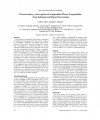 Description Of Pterois andover Lionfish Description Of Pterois andover Lionfish |
1401734040 Author(s): Gerald Allen; Mark Erdmann Tags: new species, Cenderawasih Bay, Halmahera, Milne Bay, lionfish Description: A new species of scorpionfish, Pterois andover, is described on the basis of six specimens, 83.9-168.0 mm SL, collected at southwestern Halmahera and western New Guinea (Papua and Papua Barat provinces, Indonesia). It has also been photographed at northern Sulawesi and Flores, Indonesia and Milne Bay Province, Papua New Guinea. 0.3 MiB |
4866 |
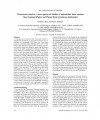 Description Of Pterocaesio monikae Fusilier Description Of Pterocaesio monikae Fusilier |
1401733837 Author(s): Gerald Allen; Mark Erdmann Tags: new species, West Papua, endemic, Cenderawasih Bay, fusilier Description: A new species of caesionid fish, Pterocaesio monikae, is described on the basis of 21 specimens, 51.8-97.5 mm SL, collected at Cenderawasih Bay, Papua and Papua Barat provinces, Indonesia during February 2006 and October 2007. It was observed in large schools containing up to several hundred individuals along the upper edge of seaward reef slopes at depths ranging from the surface to 55 m. 0.1 MiB |
2231 |
 Description Of Pseudochromis matahari Dottyback Description Of Pseudochromis matahari Dottyback |
1401733744 Author(s): Anthony Gill; Gerald Allen; Mark Erdmann Tags: new species, endemic, dottyback, Halmahera Description: Pseudochromis matahari n. sp. is described from the 44.7 mm SL holotype from Halmahera, Indonesia. 96 KiB |
1927 |
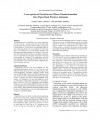 Description Of Pseudochromis jace Dottyback Description Of Pseudochromis jace Dottyback |
1401733584 Author(s): Gerald Allen; Anthony Gill; Mark Erdmann Tags: new species, West Papua, endemic, Triton Bay, dottyback Description: Pseudochromis jace is described from three specimens, 37.9-62.5 mm SL, collected in the vicinity of Triton Bay, Papua Barat Province (western New Guinea), Indonesia. 0.1 MiB |
1598 |
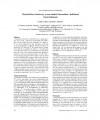 Description Of Pseudanthias charlenae Fairy Basslet Description Of Pseudanthias charlenae Fairy Basslet |
1401733482 Author(s): Gerald Allen; Mark Erdmann Tags: new species, Cenderawasih Bay, fairy basslet, anthia Description: Pseudanthias charleneae is described from a single specimen, 75.3 mm SL, collected at Cenderawasih Bay, western New Guinea (Papua Province, Indonesia) at a depth of 56 m. 0.1 MiB |
284 |
 Description Of Pomacentrus fakfakensis Damselfish Description Of Pomacentrus fakfakensis Damselfish |
1401733350 Author(s): Gerald Allen; Mark Erdmann Tags: new species, endemic, Kaimana, damselfish, Fak Fak Description: Pomacentrus fakfakensis is described from 13 specimens, 17.757.0 mm SL, collected at the southern Birds Head Peninsula of western New Guinea (Irian Jaya Barat Province, Indonesia). It is distinguished from most similar species in the western Pacific by possessing 14 instead of 13 dorsal-fin spines. 0.7 MiB |
1895 |
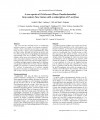 Description Of Pictichromis caitlinae Dottyback Description Of Pictichromis caitlinae Dottyback |
1401733216 Author(s): Gerald Allen; Anthony Gill; Mark Erdmann Tags: new species, endemic, Cenderawasih Bay, dottyback Description: The coral reef fish previously known as Pictichromisaurifrons is shown to consist of two species including P.caitlinae, which is described as new based on eight specimens,26.3-42.6 mm SL, from Cenderawasih Bay, westernNew Guinea. Although both species are known only from New Guinea, the two are geographically separated by approximately 2,700 km of coastline. 0.1 MiB |
437 |
 Description Of Paracheilinus walton Flasher Wrasse Description Of Paracheilinus walton Flasher Wrasse |
1401733096 Author(s): Gerald Allen; Mark Erdmann Tags: new species, West Papua, endemic, Cendrawasih Bay, flasher wrasse Description: The Indo-Pacific labrid fish Paracheilinus walton is described from four male specimens, 34.8-40.7 mm SL, and two females, 27.7-38.9 mm SL, collected in 46 m at Yapen Island, Papua, Indonesia. 0.5 MiB |
263 |
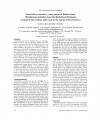 Description Of Paracheilinus nursalim Flasher Wrasse Description Of Paracheilinus nursalim Flasher Wrasse |
1401732984 Author(s): Gerald Allen; Mark Erdmann Tags: new species, endemic, Kaimana, Fak Fak, flasher wrasse Description: Paracheilinus nursalim is described from 16 male specimens, 39.4-51.0 mm SL, and three females, 20.9-28.9 mm SL, collected at the Fak Fak Peninsula and Triton Bay area of western New Guinea. 0.2 MiB |
226 |
 Description Of Melanotaenia flavipinnis Rainbowfish Description Of Melanotaenia flavipinnis Rainbowfish |
1401732859 Author(s): Gerald Allen; Renny Hadiaty; Peter Unmack Tags: Raja Ampat, new species, rainbowfish, Misool Description: A new species of melanotaeniid rainbowfish, Melanotaenia flavipinnis, is described from Misool Island in the Birds Head region of western New Guinea (West Papua Province, Indonesia). The new taxon is described from 20 specimens... 0.9 MiB |
749 |
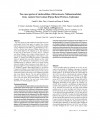 Description Of Melanotaenia ammeri And kokasensis Rainbowfishes Description Of Melanotaenia ammeri And kokasensis Rainbowfishes |
1401732512 Author(s): Gerald Allen; Peter Unmack; Renny Hadiaty Tags: Bird's Head Seascape, endemic, Kaimana, rainbowfishes, Arguni Bay Description: Two new species of rainbowfishes are described from the southwestern Birds Head region of western New Guinea (Papua Barat Province, Indonesia). Melanotaenia ammeri n. sp. is described on the basis of 19 specimens, 46.5-82.2 mm SL, collected near Gusimawa Village, Arguni Bay. It is most closely related to M. kokasensis n. sp., also described as new from 25 specimens, 27.2-68.5 mm SL, collected near Kokas Village on the northern Fakfak Peninsula. 0.4 MiB |
318 |
 Description Of Lutjanus papuensis Snapper Description Of Lutjanus papuensis Snapper |
1401732357 Author(s): Gerald Allen; William White; Mark Erdmann Tags: new species, West Papua, snapper Description: Two new species of snappers, genus Lutjanus, are described from Indo-West Pacific seas... Lutjanus papuensis is described from four specimens, 173–259 mm SL, collected at Cenderawasih Bay, West Papua and purchased from fish markets at Bali and western Java, Indonesia. It has also been observed at Timor Leste, northern Papua New Guinea, and the Solomon Islands. 4.8 MiB |
5017 |
 Description Of Hoplolatilus randalli Tilefish Description Of Hoplolatilus randalli Tilefish |
1401732188 Author(s): Gerald Allen; Mark Erdmann; Alison Hamilton Tags: tilefish, Western Pacific, fronticinctus, luteus Description: Hoplolatilus randalli n. sp. is described on the basis of 13 specimens, 46.7-158.2 mm SL, collected at the Banda Islands and West Papua in Indonesia, Luzon in northern Philippines, Palau and Yap in Micronesia, and the Solomon Islands. The species has previously been confused with H. fronticinctus Günther... 0.3 MiB |
240 |
 Description Of Hoplolatilus erdmanni Tilefish Description Of Hoplolatilus erdmanni Tilefish |
1401732015 Author(s): Gerald Allen Tags: Bird's Head Seascape, endemic, Triton Bay, tilefish Description: Hoplolatilus erdmanni is described on the basis of two specimens, 129.8-137.2 mm standard length, collected in the vicinity of Triton Bay, Irian Jaya Barat Province (western New Guinea), Indonesia. 0.4 MiB |
2073 |
 Description Of Heteroconger mercyae Garden Eel Description Of Heteroconger mercyae Garden Eel |
1401731904 Author(s): Gerald Allen; Mark Erdmann Tags: new species, West Papua, Kaimana, garden eel Description: A new species of heterocongrine garden eel is described fromWest Papua, Indonesia based on 13 specimens, 106.3-678.1 mm TL. 0.2 MiB |
266 |
 Description Of Hemiscyllium halmahera Epaulette Shark Description Of Hemiscyllium halmahera Epaulette Shark |
1401731750 Author(s): Gerald Allen; Mark Erdmann; Christine Dudgeon Tags: endemic, walking shark, epaulette shark, Halmahera Description: Hemiscyllium halmahera new species is described from two specimens, 656-681 mm TL, collected at Ternate, Halmahera, Indonesia. The new species is clearly differentiated on the basis of colour pattern. 0.3 MiB |
283 |
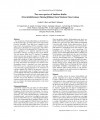 Description Of Hemiscyllium galei and henryi Epaulette Shark Description Of Hemiscyllium galei and henryi Epaulette Shark |
1401731583 Author(s): Gerald Allen; Mark Erdmann Tags: West Papua, Triton Bay, walking shark, Cendrawasih Bay, epaulette shark Description: Two new species of hemiscylliid sharks are described from the Bird’s Head region of western New Guinea (Papua Barat Province, Indonesia). They differ from congeners on the basis of both colour patterns and DNA composition. 0.4 MiB |
328 |
 Description Of Halichoeres erdmanni Wrasse Description Of Halichoeres erdmanni Wrasse |
1401731448 Author(s): John Randall; Gerald Allen Tags: new species, Fak Fak, Kokas, wrasse Description: Halichoeres erdmanni, new species, described from 10 specimens collected from fringing reef in Berau Bay, West Papua, Indonesia. 0.5 MiB |
1974 |
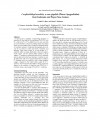 Description Of Corythoichthys benedetto Pipefish Description Of Corythoichthys benedetto Pipefish |
1401731324 Author(s): Gerald Allen; Mark Erdmann Tags: new species, West Papua, Triton Bay, pipefish Description: A new species of pipefish, Corythoichthys benedetto, is described on the basis of five specimens, 59.5-67.6 mm SL, collected in 5 to 15 m depth from rock and coral reefs at two Indonesian locations including Triton Bay, Papua Barat Province (western New Guinea) and Kabaena Island, off southern Sulawesi. 0.2 MiB |
351 |
 Description Of Cirrhilabrus cenderawasih Fairy Wrasse Description Of Cirrhilabrus cenderawasih Fairy Wrasse |
1401731065 Author(s): Gerald Allen; Mark Erdmann Tags: new species, Cendrawasih Bay, Fairy wrasse, isolation Description: Cirrhilabrus cenderawasih is described from seven specimens, 38.9-65.1 mm SL, collected at Cenderawasih Bay, Papua, Indonesia. It is closely related to C. walindi from Papua New Guinea and the Solomon Islands, but differs with regards to male color pattern... 1.0 MiB |
547 |
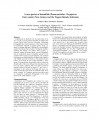 Description Of Chrysiptera giti Damselfish Description Of Chrysiptera giti Damselfish |
1401665283 Author(s): Gerald Allen; Mark Erdmann Tags: damselfish, Fak Fak, Papua Barat Description: Chrysiptera giti is described from nine specimens, 23.4- 36.0 mm SL, from the Fak Fak Peninsula of western New Guinea (Papua Barat Province, Indonesia). 0.2 MiB |
2561 |
 Description Of Chromis unipa and albicauda Damselfish Description Of Chromis unipa and albicauda Damselfish |
1401665048 Author(s): Gerald Allen; Mark Erdmann Tags: Description: Two new species in the pomacentrid genus Chromis are described from Indonesian seas. 0.4 MiB |
423 |
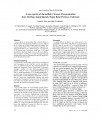 Description Of Chromis athena Damselfish Description Of Chromis athena Damselfish |
1401664796 Author(s): Gerald Allen; Mark Erdmann Tags: Raja Ampat, endemic, damselfish, Penemu, Fam Description: A new species of pomacentrid fish, Chromis athena, is described from five specimens, 49.8-54.3 mm SL collected in 62 m depth at the Raja Ampat Islands of western New Guinea (Papua Barat Province, Indonesia). 0.1 MiB |
2717 |
 Description Of Calumia eilperini and papuensis gudgeons Description Of Calumia eilperini and papuensis gudgeons |
1401664527 Author(s): Gerald Allen; Mark Erdmann Tags: new species, West Papua, endemic, Cenderawasih Bay, gudgeon Description: Two new species of reef-dwelling eleotrids are described from Cenderawasih Bay, West Papua, Indonesia. Both new species were collected together in 5-12 m depth on a sheltered, near-shore coral reef. 0.2 MiB |
234 |





































